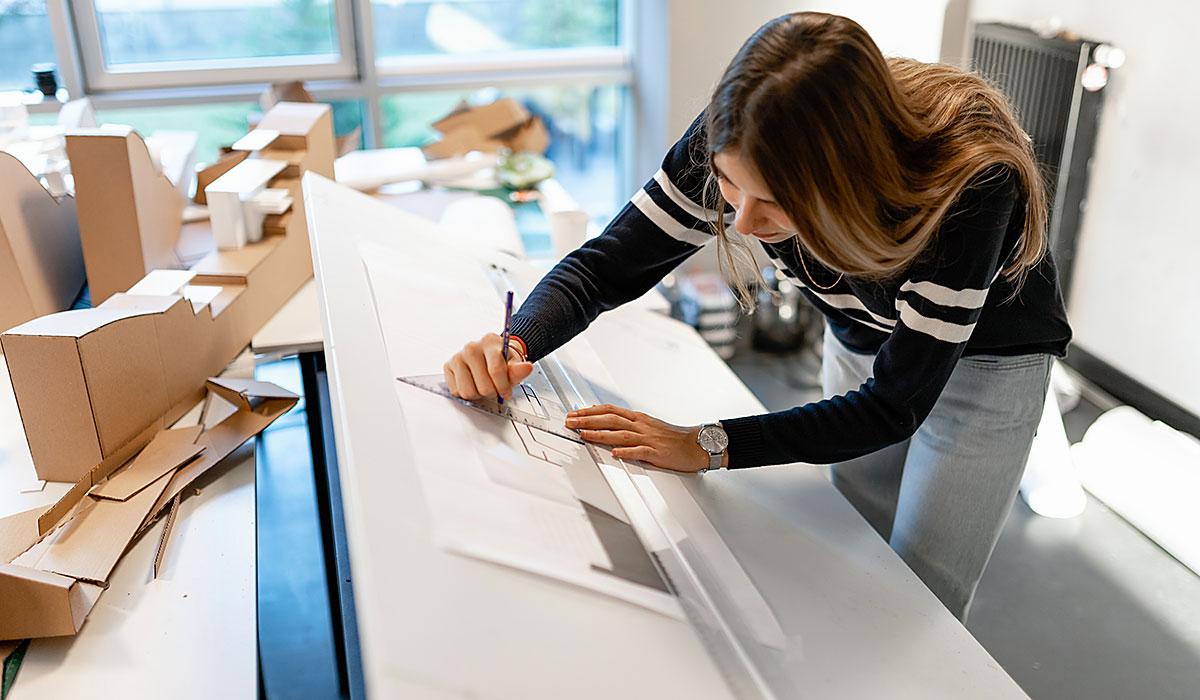
Our lives are filled with the workmanship of master craftspeople who envisioned what contemporary society might look like for us someday. From bridges to roads, buildings to houses, they impact our daily routine and interconnect us in a way we often take for granted. The architects behind this domain of innovation are the champions of an idea that, while universal, is easy to forget: sustainability. How will you help construct our world into a locale that accommodates its citizens? Grab your planes, triangles and protractors because the Bachelor of Architecture degree program is on the rise this Fall 2022.
Laying the Foundation
Every solid fortification needs infrastructure that will hold it steady for years to come. The Bachelor of Architecture (BArch) is designed so that students will remain confident in its course structure and instructors as they progress through their college careers. Being a comprehensive five-year degree program, the first of its kind in the nation based out of a community college, the BArch blends creativity with technology as students learn, as well as develop, the evolution of contemporary societal structures, participate in environmental awareness, and draw up their own personal portfolio.
Kreg Mebust, Interim Dean of Technical Sciences worked with Architecture Instructor Kaysi Archey, and TMCC Alumnus Jim Severt to build the new degree program from the ground up.
“This program is being tailored to not only meet the demands of what an architect is and does globally, but also emphasize the ever-growing demand and change of architecture in our regional environment,” Severt said of the program’s gravity. "It will focus on sustainable practices, interactions with our ever-changing environment and the demand of population growth. The BArch program addresses this and so many other issues we face in the next twenty, fifty, one hundred years.”
The BArch will undoubtedly address issues of environmental concern, cultivating its students to be honest stewards of the Earth’s ecosystem. When asked what sorts of challenges architects face today, Mebust said, “We need to be drivers of change: climate change, housing shortages, building codes that are not keeping pace with client wishes.” Architects are acutely aware of their responsibility to identify, and design for, the impact of climate change. As we continue to lessen our waste and prioritize urban greenery in partnerships and campaigns for change, solutions to reduce pressure on our planet will gather public attention. Your instruction will instill you with deep-rooted practices to ensure a wholly habitable world.
“Students who complete the BArch could pursue licensure as an architect, landscape architect or residential designer,” Archey said concerning the spectrum of career opportunities available. “Graduates could practice as an architectural or interior designer, project manager for the architect or on a construction site, urban planner, product designer, park master planner, or even a teacher. The list is extensive and opens up a new realm of possibilities.”
Building Your Future
Studying architecture is an imaginative and inventive undertaking. You’ll get to explore outlooks that frame our world today—like how diverse cultures use space or what standards make up an ideal human habitat. You’ll develop into a brilliant problem solver, involved in the design process and using your technical skills to resolve issues in daily living. The volume of personal growth you’ll achieve in architecture school is great, all amidst an environment where you are rewarded for your original ideas.
“I most enjoy architecture because it allows us to make an impact on individual people, the city or town a building or space resides in and even on the Earth,” Archey said. “As designers, we decide if people will feel inspired or uncomfortable, welcomed or shocked by the architecture when they enter a space. In a town that lacks community, we can design a building that brings people together and changes the atmosphere, whether that’s through the design, the function, or both. On a larger scale, we can choose to make a better impact on Earth by choosing to use local, recycled materials or lighter colored materials so as to not affect the urban heat island effect as significantly.”
You don’t need eye protection to visualize how buildings and infrastructure are the lenses through which a genuine reflection of peoples’ customs can be admired. In doing so, societal architecture assists its populace by enriching all manner of modern necessities. It merges a union of fundamental as well as recreational structures. Hospitals, schools, residential areas and markets all contribute the basics humans require to sustain a normal lifestyle. On the flip side, cinemas, amusement parks, restaurants and museums are luxuries that collectively construct human interaction.
“There’s a lot of work ahead with wildfire interface, water quantity and quality, environmental stewardship and sustainable energies and practices,” Severt said spiritedly. “The work will be innovative, groundbreaking, and geared toward our and humankind’s future.
Architecture’s applications enhance our daily lives in ways that we wouldn’t necessarily predict or expect. It has the power to stimulate economic growth, improve our quality of life, and bolster advancement as a society. “This is my life’s work. This is what I was meant to do,” Mebust said. Come be a part of Nevada’s elite unit of architects who help construct our society as we know it. Hit the drafting board, and begin sketching the blueprint for your future now!
For additional information about the Bachelor of Architecture degree program at TMCC, contact the Applied Technologies Department.






